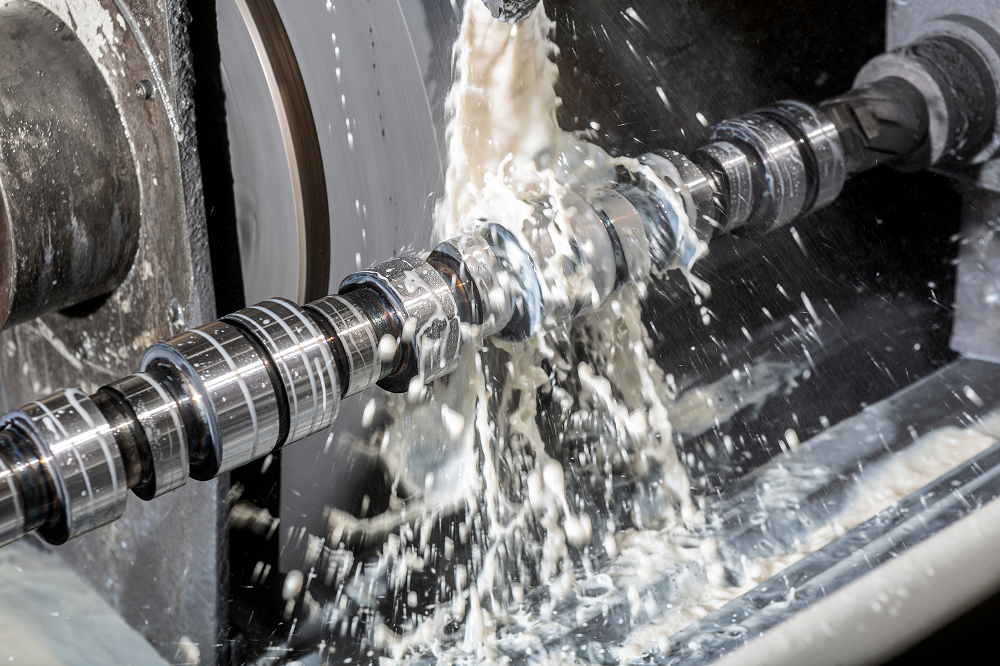Some of the most common challenges in grinding operations manifest as issues with workpiece surface finish, productivity, material costs, and tolerances. Regardless of the cause of these problems, simply upgrading to the right cutting and grinding fluid can dramatically improve grinding processes. Here’s a breakdown of typical challenges manufacturers may face and how the right cutting fluid can combat them:
1. Poor or Inconsistent Surface Finish
Grinding is often a part finishing process, and it can be difficult to pinpoint the exact cause of poor finish quality in a grinding operation since it could be caused by previous operations. In most cases, it requires rework to achieve correct finishes and dimensions. Any amount of rework increases production time and cost for each part and causes throughput bottlenecks.
Switching to higher quality cutting fluid optimized for precision grinding operations such as TRIM® C270CG or TRIM® C390 can help alleviate many finish quality issues. Fluids with higher lubricity can help grinding wheels achieve a smoother, more polished finish. They also keep grinding wheels clean and minimize the need for wheel dressings.
2. Burning
Thermal damage, or burning, manifests in a variety of ways, including discoloration on the workpiece, surface distortions on the part, and even workpiece hardness. While these issues can be common in any type of grinding, they can be eliminated with the correct type and concentration of cutting fluid.
Burning can be caused by grinding wheel slipping or too much being put back into the part. An incorrect wheel hardness or abrasive, incorrect fluid, as well as surface feet per minute (SFM)/feed rate issues, can all cause burning.
To avoid this threat to productivity, try switching to a cutting fluid with more advanced cooling and lubricity. With a high-performance grinding fluid, operators may be able to increase feed rates or depth of cut, both of which increase productivity.
3. Short Wheel Life
If the grinding wheel is too hard, too soft, or otherwise mismatched to the material being machined, the wheel could load up or break down faster, resulting in unnecessary machine downtime and higher consumable costs. The right grinding fluid is also essential to maximizing wheel life, as the wrong one could lack the necessary lubricity and cooling. Switch to a premium fluid that can keep the grinding wheel clean to maximize wheel performance while minimizing foam.
4. Short Fluid Life
Grinding operations can create a lot of swarf which can build up in the fluid tanks if not filtered properly. This swarf buildup can lead to bacteria issues and contaminate the grinding fluid quickly. Poor sump life also presents a number of productivity and material cost issues.
Upgrading to a clean-running fluid that is compatible with fine filtration, rejects tramp oil, and prevents foam formation will dramatically extend the useful life of the fluid, maximize machine uptime, and keep costs down.
Manufacturers need a high-performance grinding fluid that’s purpose-built to handle the toughest and most demanding grinding operations. TRIM® C118 and TRIM® C390 for example, are formulated from the ground up with these needs in mind, designed to maximize cooling, reject tramp oil, and settle fines quickly for easy filtration. The fluid provides excellent corrosion protection with a soft film without creating sticky residues or buildup on the machinery or workpieces.
Contact a Master Fluid Solutions® expert for help diagnosing the cause of your grinding challenges. You can also schedule a free trial of TRIM® C118 to experience the difference a high-performance grinding fluid can make.

